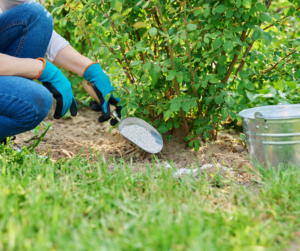How to Achieve Living Soil for Robust Growth

A plant is only as healthy as the soil where it’s rooted. While there’s a lot we can do to help improve conditions, more gardeners are turning away from chemical enhancement and toward cultivating living soil. What’s living soil? Learn more about its components and how it can benefit plant growth.
What’s Living Soil
As the name suggests, living soil is rich in organic matter teeming with beneficial microorganisms. Imagine a bustling ecosystem working beneath the surface. Good bacteria, fungi, protozoa, nematodes, and earthworms all work together to achieve the following:
- Decompose organic matter
- Cycle nutrients
- Improve soil structure
- And more.
Not only does this network enhance plant health, but it also contributes to the overall health of the ecosystem. This is something chemicals can’t claim.
How to Cultivate Living Soil
If helping your plants and environment thrive sounds like a good idea, keep the following components of living soil in mind.
- Diverse organic matter. The basic building block of living soil includes a wide array of organic matter. This can be anything from home-grown compost, manure, cover crops, and natural mulch. Each type has its own job to do, so use a variety in your soil to promote biodiversity. Not only does organic matter feed the organisms in living soil, but it also improves structure, water retention, and nutrient intake.
- Minimal soil disturbance. Help preserve the delicate ecosystem by leaving it alone. Avoid excessive tilling to prevent damaging microbial communities. Use a low- or no-till method of gardening by adding organic matter on top of your soil instead of tilling it in. It still adds much-needed nutrients and gives you a much-needed break from digging! Only break up the soil if you have compacted sod.
- Well hydrated and aerated. Microorganisms prefer moisture. Maintain adequate levels to help keep them active, but avoid overwatering which can end up drowning them. If the soil is properly aerated, you’ll avoid compaction and improve drainage. Keep in mind, earthworms are not only on the Organic Matter team, but they also help aerate soil. Add more composted plant material and manure to help attract them and let the natural cycle do its thing.
- Chemical-free. Using synthetic fertilizers, pesticides, and herbicides can harm beneficial organisms and disrupt the natural balance of the ecosystem. Opt for organic and natural alternatives that support soil life.
Where to Start
If you want to start cultivating living soil to benefit your plants, here are some practical steps to follow.
- Test your soil. Find out where your soil is starting from in terms of its current composition and nutrient levels. Make any amendments needed to improve soil health and balance pH levels. This includes adding the types of organic matter mentioned above.
- Plant with food. Even if your soil isn’t exactly where you want it yet, you can still use a natural fertilizer that contains good bacteria and fungi. This helps build beneficial networks throughout the soil to boost your plants nutrient uptake.
- Mulch. Help protect your nutrient-rich living soil by blanketing it with a layer of organic mulch, such as straw, wood chips, or shredded leaves. Mulch helps retain moisture, suppress weeds, regulate soil temperature, and provides a healthy habitat for soil organisms.
- Rotate Crops. Remember when we discussed adding different types of organic matter? Rotating different plant families each season helps maintain and balance soil fertility.
- Attract beneficial organisms. You want your soil to be bustling with life, remember? So invite earthworms, beneficial bacteria, and fungi by providing a moist, nutrient-rich environment that’s protected by a blanket of mulch and not often disturbed.
- Compost. Provide your own organic material by starting a compost pile full of recycled organic waste.
While it may be easy to order a chemical claiming to promote robust plant growth, you can be doing so much more for your soil by fostering sustainable gardening practices. Create an environment where plants naturally thrive by embracing the richness of living soil. Your garden and the environment thanks you.



